- Home
- Terry Brooks
Sometimes the Magic Works Page 6
Sometimes the Magic Works Read online
Page 6
Well, forget all that. When I speak of outlining, I want you to think of something else entirely, something that shares only one thing in common with all that early secondary school nonsense. That one thing is another “O” word—organization.
Now, you are going to hear a lot of very successful writers tell you that they don’t outline their books. Never have, never will. They are going to give you all sorts of reasons why you shouldn’t either—sometimes in direct fashion, sometimes by implication. I’ve never done it, they will advise, so it’s all right if you don’t. Or, I’ve never seen the point to it, so how could you? Like that. I’ve listened to and read comments like this for years—not from writers selling five thousand copies of their books a year, but five hundred thousand.
Let me give you some examples. Stephen King writes in his entertaining and informative book On Writing that plotting just gets in the way of storytelling and robs it of its spontaneity. He prefers just to plop down characters in a challenging situation and see what they will do. Anne Lamott in her wonderful book on what it is like to become a published writer, Bird by Bird, talks about just sitting down at the keyboard with no plan in mind whatsoever and thrashing around for hours, sometimes days, until something finally happens. I’ve listened to Terry McMillan, on being asked about outlining, reply to an audience of two thousand at the Maui Writers Conference, “Why would I want to tell the same story twice?” On a fantasy writing panel several years ago, after I had given my usual spiel about the importance of outlining, I had Anne McCaffrey turn to me and gently and sweetly say, “Terry, I don’t think I’ve ever outlined anything in my life.”
The list of successful writers who claim not to outline their books before they write them goes on and on. All right, you say, so why are you telling us we should outline when they don’t? Why can’t we do like they do? Why can’t we just sit down and tell our stories?
Well, maybe you can. Maybe you’re one of the lucky ones who can make it work. On the other hand, maybe not. We know right off the bat that you probably aren’t Stephen King or Anne Lamott or Terry McMillan or Anne McCaffrey. We also know that a lot of other writers aren’t either, and a fair number, some of them very successful, do outline their work before they sit down to write their books.
Ask yourself this: How many books have you read where the author introduced a plot element that seemed to never go anywhere? Or involved you with a character who wandered off somewhere along the way and never returned? How many books have you read where the first three hundred pages were wonderful, and then everything fell apart—where you had the feeling that the author was just looking to wrap things up and get paid? How many books have you read that were so disjointed in their storytelling that you had to keep looking back to see where they were going? How many books have you read that were so empty of purpose that by the time you finished reading them—supposing you got that far—you felt you had been cheated out of the twenty-five-dollar purchase price?
I would suggest that all of these problems are organizational in nature, which means it is more likely than not that the author failed to do a lick of outlining.
Writing isn’t a crapshoot. Publishing, yes—but not writing. Writing is a craft. You can learn it, and you can learn to do it better. As you’ve already read previously in this book, you might have it in you to be a writer or you might not; that’s just the way it is. But if you do have it in you, what you would like to do is to reduce the odds of producing a piece of writing that doesn’t represent your best effort.
So let me give you my thoughts on why I think outlining is a valuable tool that doesn’t have to deflate your excitement before you even get started or turn your writing experience into a boring exercise in word assembly.
If you outline your book in advance, you will force yourself to think your story through. To some degree, depending on how thorough you choose to be, you will have to juggle plot, characters, settings, points of view, and thematic structure in order to assemble your story. You will have to build a story arc—a beginning, middle, and end—that comprises the gist of your book. You will have to consider all the possible choices you can imagine in crucial situations and select the ones that seem best. You won’t do this for every twist and turn the book takes, but you will do it for the big ones. You will take this information and you will write it down in some recognizable fashion so that you can refer to it later.
This accomplishes several important goals.
It gives you a working blueprint to which you can refer later. Now, I don’t know about you, but it takes me a while to write a book. It doesn’t take just days or weeks, but months and sometimes years. For me, that’s a long time to remember stuff. After fifty-odd years of dealing with life’s vicissitudes, I find I don’t remember things as well as I used to—or maybe as well as I think I used to. Having written down what it was you intended to do and where it was you intended to go can be a big help. Five months after you’ve started a book, you can still look at that blueprint and know what it was you wanted to accomplish when you started out—not only with the story at large, but with every major plot point and character.
By having outlined, you are also in a better position to know during the course of your writing when you are being scammed by trickster plot twists and duplicitous characters—by all those ideas that seem so good at the time, but in the end will lead you astray. It is a given that in the writing of any book, your outline will change. I mean, come on, you didn’t think I was going to tell you your outline was written in stone, did you? These are working drawings we’re talking about. These are sketches. Nothing informs the writer about how a book should come together like the actual writing of it. Remember what I said earlier about discarding all those preconceived notions about outlines? Here’s a good place to start. No matter how thoroughly or carefully you have considered your story, you are going to get new and better ideas about how it should be told when you actually write it. You are going to see places where you can improve on the original plot, tighten the narrative, better use a character, and so on and so forth.
But by having already considered most of the possibilities while you were constructing your outline, you can now make a more informed decision about which way to go. Because you have those working drawings at hand, you can tell how a change you are contemplating will impact the rest of your book. The end result is that you can do a better job of keeping at bay those plot lines and characters that will play you false.
I would also argue that there is a good chance that an outline will help you stave off any onslaught of writer’s block. Let me advise you right up front that I am not a big believer in writer’s block. I think writer’s block is God’s way of telling you one of two things—that you failed to think your material through sufficiently before you started writing, or that you need a day or two off with your family and friends. In the latter instance, God frequently speaks to me through Judine. In the former, listen to this voice of reason as it whispers in your ear. Hssst! If you want to avoid writing yourself into the box of dead ends or out into the desert of poor ideas or off into the wilderness of ill-considered plot choices, an outline will help!
Perhaps the best reason of all for outlining is that it frees you up immeasurably during the writing process to concentrate on matters other than plot. Think about it. Each chapter needs to be told from a character’s point of view, needs to establish a mood and set a scene, likely requires both narrative and dialogue, and probably demands a sense of movement. That’s just the bare bones of it, but even that much is fairly daunting. Plus, you have to think about how your story will come across to the reader. What words and images will you use? What emotions will you try to evoke? Where is the conflict in this scene? Is there a turning point, a secret, a revelation, a red herring?
Now, on top of that you want to mess around with trying to figure out your plot? Who do you think you are—Houdini?
Okay, I exaggerate. I’m a writer, what do you expect? But the core tru
th remains unaltered. If you take time in the beginning to think your story through and commit some of those thoughts to paper in the form of an outline, you will free yourself up later to concentrate on other matters of writing and thereby reduce some of the stress in your life.
In the next chapter, we’ll take a look at specific ways in which you can make this process work.
* * *
Just sitting down and thinking about writing
doesn’t always work. It would be nice if it did,
but the creative process is more complicated than simply deciding to create and then doing it.
* * *
* * *
DREAM TIME
* * *
LET ME BEGIN by repeating that you need to forget all about the kind of outlining you were taught in grammar and English classes as a kid. Forget about Roman Numeral One and Capital A. Forget about the whole idea of a structure comprised of neatly numbered and indented paragraphs. We don’t want that approach. We don’t want anything remotely like it. We want organization, but not conformity or rigidity.
I’m going to use my own approach as a working model. I’m not saying you should do things exactly the same way I do. For each of us, the approach to outlining a book is going to vary, just like our approach to writing. That’s all right. You want to find a way that will work for you. By offering my approach as an example, I’m hoping you can figure out your own.
For me, it begins with just thinking about what I want to write—the plot, characters, setting, mood, pacing, point of view, twists and turns, thematic structure, anything and everything that has to do with the story. I have learned it is a process I cannot rush. Sometimes it goes quickly and sometimes it takes forever. Think of it as a percolation period, when you let your ideas brew and the flavor of your story build.
Lots of ideas occur to me while this is going on. I don’t write them down. I don’t write anything down—except for names, which go on a name list I carry with me everywhere. But nothing else. It’s a firm rule. I used to think that if I got an idea, I should write it down immediately so that I wouldn’t lose it. Sometimes I would wake in the middle of the night with brilliant ideas that I would dash down on slips of paper so they would be saved for when I awoke the next morning. What happened was that either I couldn’t make sense of them or they turned out to be not so brilliant after all. So I’ve changed my thinking on this. If an idea doesn’t stick with me for more than twenty-four hours, it probably wasn’t all that hot in the first place.
Anyway, this thinking period—this dream time—is crucial to everything that happens later, but particularly to the construction of my outline. I want to be able to picture my story in images before I try to reduce it to mere words. I want to think about the possibilities. Everyone asks a writer where he gets his ideas. You’ve already seen the chapter on that. The truth is that coming up with ideas is easy; it’s making up the stories that grow out of them that’s hard.
Sometimes I have to jump-start the process. Just sitting down and thinking about writing doesn’t always work. It would be nice if it did, but the creative process is more complicated than simply deciding to create and then doing it. Sometimes, my mind doesn’t like it when I try to put it to work, and it just shuts down. Sometimes, it chooses to think about other things. Instead of focusing on how I can solve that latest plot dilemma, it prefers to concentrate on how long it will be until I eat again or whether or not the sprinkler system will stick on for another twenty-four hours like it did yesterday. Trying to tell it what to do is like trying to teach your cat to sit up and beg. If it feels like it, it will. If it doesn’t, good luck.
What I can do to banish that recalcitrant attitude is to put myself in an atmosphere that encourages dreaming. Some moods and settings and experiences are more conducive to creative thinking than others. For each of us, this varies. I find I am able to free up my thinking best in a couple of very specific ways.
One is to take a long drive, preferably out in the country somewhere. Driving puts me in a zone that allows me to concentrate on the mechanics of driving the car while thinking of something else entirely. I find myself coming up with ideas I could never imagine if I just sat down and tried to conjure them. Maybe it’s the movement, but it works every time.
A second freeing experience is to go to the symphony. I can sit there listening to the music and disappear into another world. I don’t know why, but classical music seems to suggest fresh places and new stories. It transports me. It causes me to imagine possibilities for writing that invariably yield something good. This result doesn’t come about with any other kind of music. When I was a kid, I used to do the same thing using stirring sound tracks from movies like Ivanhoe and Plymouth Adventure. Now, it’s classical music. I’d like to think my tastes have matured, but I’m afraid the truth is otherwise.
In any case, listening to classical music and taking long drives are what work for me. You will have to find out what works for you. But something will. Something will help free up your creative thinking and allow you to start imagining the possibilities.
But enough about you. Let’s get back to me. At some point, the mass of images floating around in my head reaches critical mass, and I have to get them out of there. That’s when it’s time to write them all down on paper. I don’t have to put them down in any particular order or with any specific plan in mind. They just need to be recorded, all of them, for a more balanced consideration of what they might lead to. By now, I probably have a pretty good idea of what the new book is going to be about. Some of my images will be fully formed. I will fill pages and pages of yellow tablets with handwritten notes. This usually takes a couple of weeks, but it can go faster. While I am writing, new ideas will occur, and I will add them to the mix. I am done when I can’t think of anything else to write down.
Now I have a collection of plotlines, character sketches, and thematic developments both large and small. Some of these will get used, some will get set aside for another story, and some will get tossed out altogether. The trick is in separating them into the right piles. A lot of this is simply gut instinct, but there are two ironclad rules I have come to rely on.
The first rule is that nothing goes into one of my books that isn’t grounded in something real and true about the human condition. Sure, I write fantasy. But I learned years ago from Lester del Rey that the secret to writing good fantasy is to make certain it relates to what we know about our own world. Readers must be able to identify with the material in such a way that they recognize and believe the core truths of the storytelling. It doesn’t matter if you are writing epic fantasy, contemporary fantasy, dark urban fantasy, comic fantasy, cookbook fantasy, or something else altogether, there has to be truth in the material. Otherwise, readers are going to have a tough time suspending disbelief long enough to stay interested.
The second rule is that everything I include must advance the story in some measurable way. There are lots of clever ideas, colorful characters, and wondrous plot twists lurking around in your head, demanding attention, seeking a place in your books. Unless they do something to further the development of your story, unless they serve a purpose, get rid of them. If all they do is take up space and look cute, get them out of there. Think of them as annoying phone solicitors who interrupt your writing time. They might have something good to sell and they might be fun to talk to, but they aren’t going to do a thing for your career. Tell them you will take their names and call them back. Maybe when you are done writing this book, you will have a place for them in the next.
The last step in this process is to pull everything together into a story arc with a beginning, middle, and end—in short, where the story starts, where it goes, and how it concludes. I don’t need to know everything. But I do need to have the big picture in mind, and I do need a clear idea of how I am going to go about painting it.
Several written exercises will help me achieve this. The most important of these is a chapter-by-chapter breakdown of th
e book. Each chapter can be covered in no more than a paragraph or two that records the essential elements of who, what, and where. If there are particular considerations, I make note of them. The writing itself will determine whether these thumbnails stay in their original form or change. What is important is that I end up with a structure I can use to help keep everything straight.
I also like to make up sketches of the main characters. The size of these will vary. A physical description will be included, but there might also be a mention of strengths or flaws or even of particular ways in which I want the character to impact the story. I like to know how these characters will interact and when. I like to project ways in which they will change over the course of the book.
I will also frequently write several pages of description of an important setting. Sometimes this is a composite of what I’ve really seen and what I’ve imagined. It will include physical descriptions of how things taste and smell. It will advise if there are trees or houses or lakes or mountains, if it is a wilderness or a settled area, if it is hot or cold, wet or dry, hospitable or savage. Mostly, it will provide me with a way to immerse myself in the surroundings of my characters so that when I begin to write about them, I will know how they feel about their world.
You may have noticed by now that the common denominator in all this is dreaming. It is imagining how things will be before writing them down. It is seeing them in my mind and making certain that my vision of them is clear. It is picking and choosing, keeping and discarding, and above all, organizing. Much of it will never appear in the book. Much of it will prove to be superfluous to the story itself—deep background, which only the author needs to know. But all of it will keep me honest. It will inform my writing and provide the reader with a sense of confidence in my storytelling.

 The Talismans of Shannara
The Talismans of Shannara The Sword of Shannara: The Druids' Keep: The Druids' Keep
The Sword of Shannara: The Druids' Keep: The Druids' Keep Witch Wraith
Witch Wraith The Elf Queen of Shannara
The Elf Queen of Shannara The Weapons Master's Choice
The Weapons Master's Choice The Scions of Shannara
The Scions of Shannara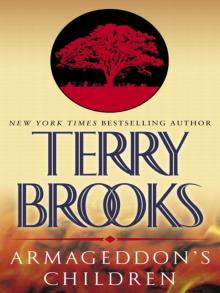 Armageddon's Children
Armageddon's Children The Sword of Shannara Trilogy the Sword of Shannara Trilogy
The Sword of Shannara Trilogy the Sword of Shannara Trilogy The Darkling Child
The Darkling Child The Black Unicorn
The Black Unicorn The High Druid's Blade
The High Druid's Blade Wards of Faerie
Wards of Faerie The Tangle Box
The Tangle Box The Black Elfstone
The Black Elfstone The Black Irix
The Black Irix The Elfstones of Shannara
The Elfstones of Shannara The Magic Kingdom of Landover Volume 2
The Magic Kingdom of Landover Volume 2 Bearers of the Black Staff
Bearers of the Black Staff Jarka Ruus
Jarka Ruus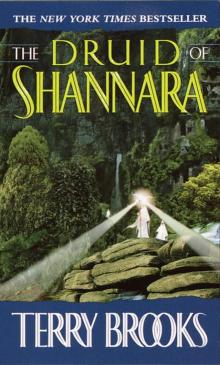 The Druid of Shannara
The Druid of Shannara The Sword of Shannara
The Sword of Shannara The High Druid of Shannara Trilogy
The High Druid of Shannara Trilogy Angel Fire East
Angel Fire East The Gypsy Morph
The Gypsy Morph The Wishsong of Shannara
The Wishsong of Shannara Magic Kingdom for Sale--Sold
Magic Kingdom for Sale--Sold Running With the Demon
Running With the Demon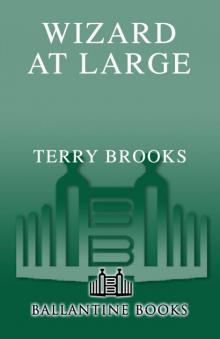 Wizard at Large
Wizard at Large The Sorcerer's Daughter
The Sorcerer's Daughter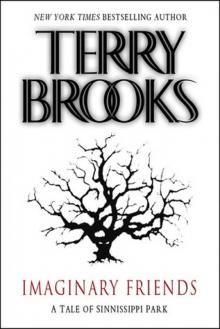 Imaginary Friends
Imaginary Friends The Elves of Cintra
The Elves of Cintra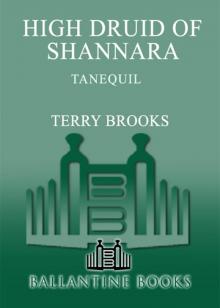 Tanequil
Tanequil Witches' Brew
Witches' Brew The Sword of the Shannara and the Elfstones of Shannara
The Sword of the Shannara and the Elfstones of Shannara The World of Shannara
The World of Shannara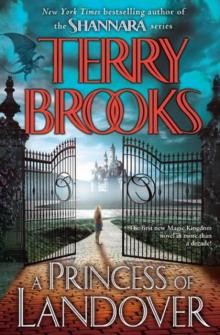 A Princess of Landover
A Princess of Landover A Knight of the Word
A Knight of the Word Straken
Straken The Skaar Invasion
The Skaar Invasion The Measure of the Magic: Legends of Shannara
The Measure of the Magic: Legends of Shannara Ilse Witch
Ilse Witch Bloodfire Quest
Bloodfire Quest The Stiehl Assassin
The Stiehl Assassin Antrax
Antrax The Last Druid
The Last Druid Paladins of Shannara: Allanon's Quest
Paladins of Shannara: Allanon's Quest Sometimes the Magic Works: Lessons From a Writing Life
Sometimes the Magic Works: Lessons From a Writing Life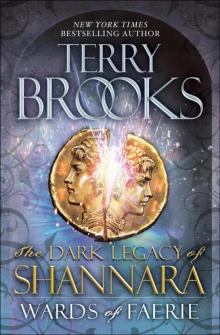 Wards of Faerie: The Dark Legacy of Shannara
Wards of Faerie: The Dark Legacy of Shannara Indomitable: The Epilogue to The Wishsong of Shannara
Indomitable: The Epilogue to The Wishsong of Shannara Heritage of Shannara 01 - The Druid of Shannara
Heritage of Shannara 01 - The Druid of Shannara Star Wars - Phantom Menace
Star Wars - Phantom Menace The Dark Legacy of Shannara Trilogy 3-Book Bundle
The Dark Legacy of Shannara Trilogy 3-Book Bundle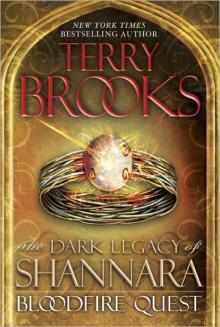 The Bloodfire Quest
The Bloodfire Quest The Hook (1991)
The Hook (1991) Star Wars: Episode I: The Phantom Menace
Star Wars: Episode I: The Phantom Menace Street Freaks
Street Freaks The Sword of Shannara & Elfstones of Shannara
The Sword of Shannara & Elfstones of Shannara The Magic Kingdom of Landover , Volume 1
The Magic Kingdom of Landover , Volume 1 The Phantom Menace
The Phantom Menace Unfettered
Unfettered Allanon's Quest
Allanon's Quest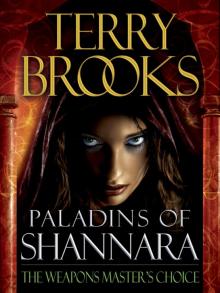 Paladins of Shannara: The Weapons Master's Choice
Paladins of Shannara: The Weapons Master's Choice Terry Brooks - Paladins of Shannara - Allanon's Quest (Short Story)
Terry Brooks - Paladins of Shannara - Allanon's Quest (Short Story) Star Wars Episode I: The Phantom Menace (star wars)
Star Wars Episode I: The Phantom Menace (star wars) Warrior (The Word and the Void)
Warrior (The Word and the Void) Word & Void 03 - Angel Fire East
Word & Void 03 - Angel Fire East![[Magic Kingdom of Landover 05] - Witches' Brew Read online](http://i1.bookreadfree.com/i2/04/05/magic_kingdom_of_landover_05_-_witches_brew_preview.jpg) [Magic Kingdom of Landover 05] - Witches' Brew
[Magic Kingdom of Landover 05] - Witches' Brew The Magic Kingdom of Landover - Volume 2
The Magic Kingdom of Landover - Volume 2 The Measure of the Magic
The Measure of the Magic The First King of Shannara
The First King of Shannara Sometimes the Magic Works
Sometimes the Magic Works The Sword of Shannara, Part 2: The Druids' Keep
The Sword of Shannara, Part 2: The Druids' Keep The Sword of Shannara tost-1
The Sword of Shannara tost-1 Paladins of Shannara: The Black Irix (Short Story)
Paladins of Shannara: The Black Irix (Short Story) Tangle Box
Tangle Box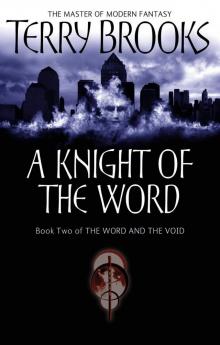 Word & Void 02 - A Knight of the Word
Word & Void 02 - A Knight of the Word The Sword of Shannara, Part 1: In the Shadow of the Warlock Lord
The Sword of Shannara, Part 1: In the Shadow of the Warlock Lord The Wishsong of Shannara tost-3
The Wishsong of Shannara tost-3 The Elfstones of Shannara tost-2
The Elfstones of Shannara tost-2